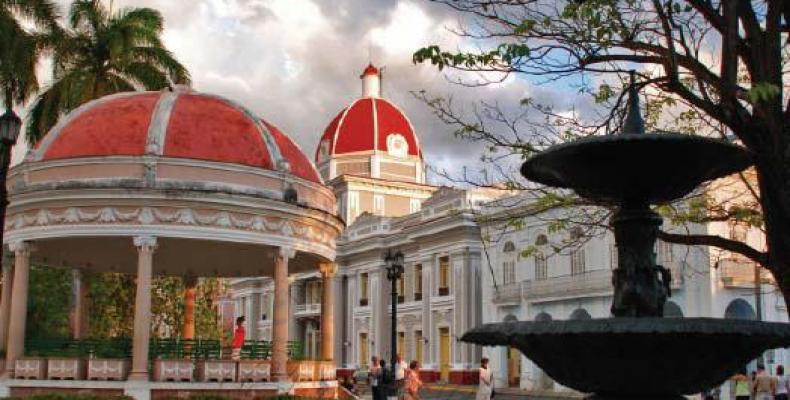Havana, April 22 (RHC) -- Cienfuegos, Cuba’s youngest and most modern city, is celebrating its 201 anniversary.
Set up by Luis Declouet on April 22nd, 1819, and originally named Fernandina de Jagua,
Cienfuegos is a 19th century eclectic style city that still keeps in its historical section the charms that its first residents enjoyed; a series of buildings with grand pillars and large halls give the site an amazing and traditional atmosphere. The most modern constructions in the beautiful city were made following the harmony of its surroundings and inhabitants’ idiosyncrasy. Cienfuegos is also known as ‘the Pearl of the South’ or ‘the Lovely City of the Sea’.
With plenty palaces, such as that of Blanco, Ferrer and Goitizolo; parks such as that of José Martí, Villuendas and Panteón de Gi, and theaters and churches, such as the Cathedral, Prado Promenade – the longest such promenade in the country- and the Seaside Wall and Drive are the favorite sites for Cienfuegos residents to visit in the city.
Its historic section, with perfectly straight streets and an impressive collection of architectural values, has been declared a National Monument. Its original center used to have 25 blocks, starting at Plaza de Armas or Arms Square, known today as Martí Square. Cuba’s only Arch of Triumph majestically stands in that amazing plaza, close to the Tomás Terry Theater, one of the most important 19th century such facilities on the island, who has been recently renovated and restored by the joint work of city artists, artisans, local institutions and solidarity organizations.
Punta Gorda and La Punta are two residential areas on the city’s southern section, where El Palacio de Valle or Valle Palace stands- an astounding mansion that shows more of Cienfuegos’ eclecticism. At the Bay, the Fortress of Our Lady of Los Ángeles de Jagua, built in 1745, is a very good example of 18th century military architecture in
Surrounding the bay is an extraordinary population of mangroves, as well as several natural shelters for local birds. A colony of over 2 hundred pink flamingos gives the place a magic touch that resembles the atmosphere the area’s ancient aboriginal inhabitants and colonizers lived in.


